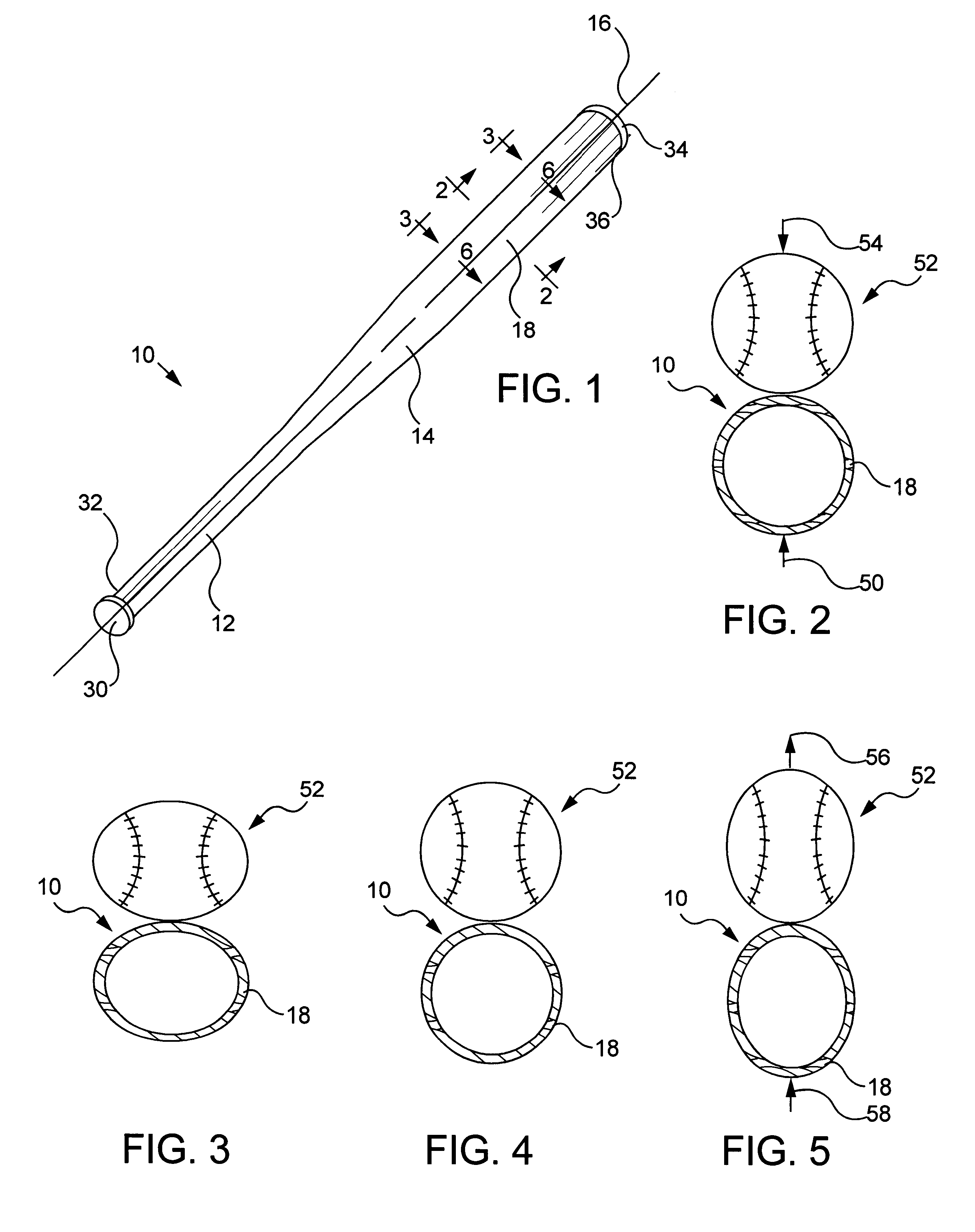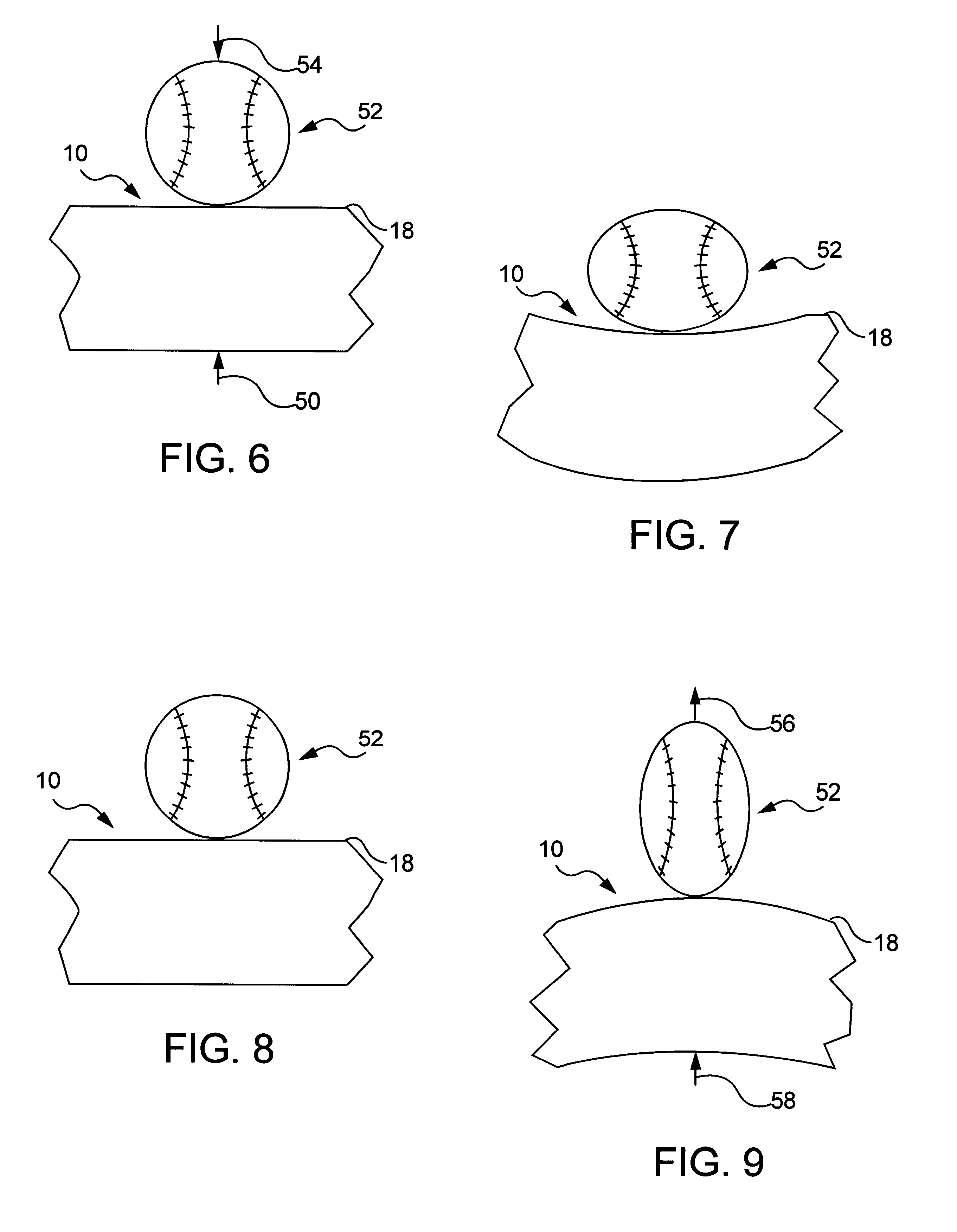Method of tuning a bat and a tuned bat
a technology of tuning method and bat, which is applied in the field of bats, can solve the problems of not being able to produce advantageous, unable to achieve the effect of optimum performance and optimum durability, and the bats produced from more conventional materials are generally less lively than composite bats
- Summary
- Abstract
- Description
- Claims
- Application Information
AI Technical Summary
Benefits of technology
Problems solved by technology
Method used
Image
Examples
Embodiment Construction
Referring to FIG. 1, a tubular baseball or softball bat 10 includes a handle 12, an intermediate tapering portion 14 extending from handle 12 along a longitudinal axis 16, and a barrel 18, having a diameter that is larger than the diameter of handle 12, extending from tapering portion 14 along longitudinal axis 16 distal from handle 12. Bat 10 further includes a butt cap 30 that forms a closure of an open terminus 32 of handle 12 distal from tapering portion 14. Butt cap 30 is coaxial with handle 12 and extends radially outwardly from terminus 32 of handle 12. Bat 10 also includes a tip cap 34 that forms a closure of an open terminus 36 of barrel 18 distal from tapering portion 14. Tip cap 34 is coaxial with barrel 18 and has a diameter approximately equal to that of barrel 18.
In use, a user grips handle 12 and swings bat 10 so that barrel 18 has an initial velocity 50 (see FIG. 2). Referring now to FIGS. 2-5, barrel 18 then strikes a ball 52, having an initial velocity 54 (see FIG....
PUM
 Login to View More
Login to View More Abstract
Description
Claims
Application Information
 Login to View More
Login to View More - R&D
- Intellectual Property
- Life Sciences
- Materials
- Tech Scout
- Unparalleled Data Quality
- Higher Quality Content
- 60% Fewer Hallucinations
Browse by: Latest US Patents, China's latest patents, Technical Efficacy Thesaurus, Application Domain, Technology Topic, Popular Technical Reports.
© 2025 PatSnap. All rights reserved.Legal|Privacy policy|Modern Slavery Act Transparency Statement|Sitemap|About US| Contact US: help@patsnap.com



